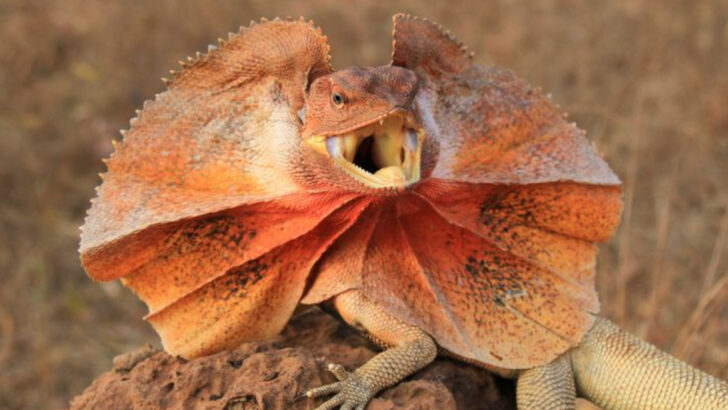When the frill goes up, you know things are about to get weird.
The Frilled Lizard looks like it walked straight out of a sci-fi movie—complete with a giant, spiky collar that flares out like a prehistoric fan. One second it’s still… the next, it’s sprinting on two legs like a tiny dinosaur in panic mode.
This reptile doesn’t just rely on camouflage—it brings drama. When threatened, it transforms from mild-mannered lizard to full-on monster mode, frill out, mouth open, hissing like it’s auditioning for a creature feature.
Found in the wilds of Australia and New Guinea, it’s not just its looks that amaze. The Frilled Lizard is packed with surprises, from its bizarre defenses to its incredible speed.
Here are 12 strange and fascinating facts about one of nature’s most theatrical reptiles.
Frill Display Mechanism
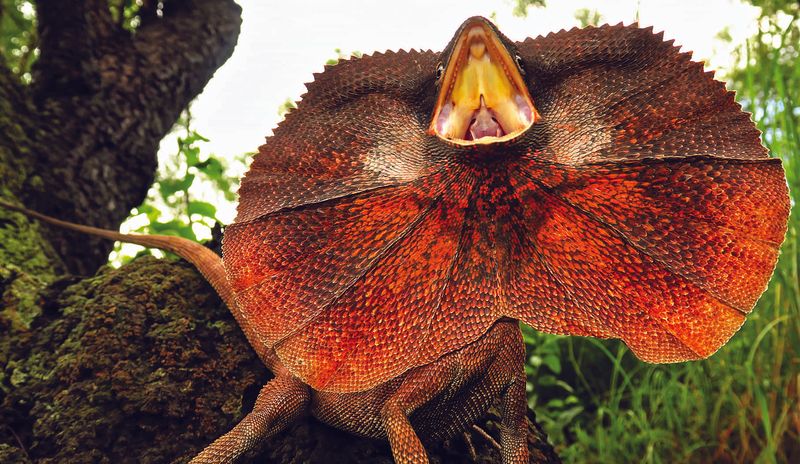
The Frilled Lizard’s most iconic feature is its large, colorful frill. This frill is usually folded back against its body but unfurls when the lizard feels threatened.
It’s an awe-inspiring sight, reminiscent of a prehistoric creature. The frill is supported by long spines of cartilage and displays a vibrant mix of colors. It serves both to intimidate predators and to communicate with other lizards.
Despite its fearsome appearance, the lizard’s frill is harmless. The frill’s sudden expansion is often enough to deter potential threats, making it a master of bluffing.
Speedy Escape Artist
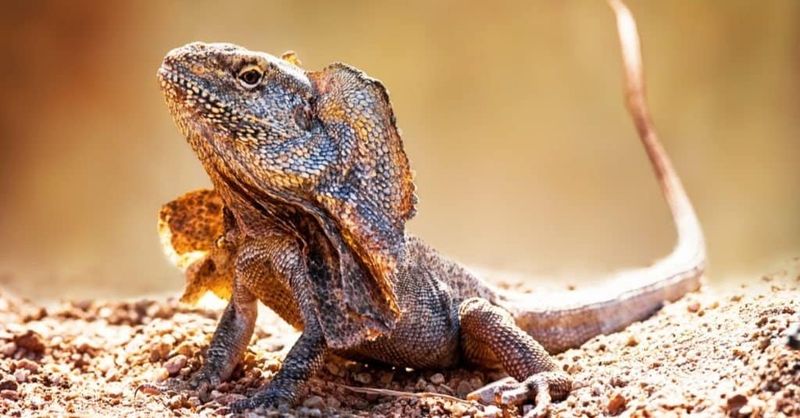
When danger looms, the Frilled Lizard doesn’t just rely on its frill. It’s a remarkable sprinter, capable of running on its hind legs, much like a tiny dinosaur.
This sudden burst of speed can help it evade predators in the wild. Its agility is a key survival tool in the harsh environments it inhabits.
The sight of this lizard darting across the ground is both amusing and impressive, showing its adaptability and resourcefulness. This ability has intrigued many researchers and nature enthusiasts alike.
Unique Hunting Techniques
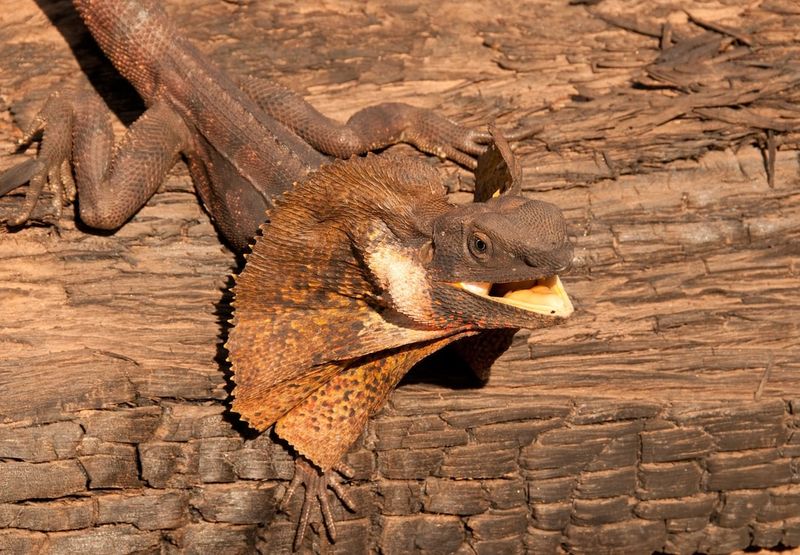
The Frilled Lizard is an adept hunter, employing various techniques to catch its prey. It primarily feeds on insects, using a combination of stealth and speed to capture its meals.
The lizard’s diet includes ants, termites, and small invertebrates. Its keen eyesight allows it to spot movement easily, even in dense foliage.
This makes it a skilled predator within its habitat. The lizard’s hunting methods are crucial for maintaining the ecological balance, as it helps control insect populations in its environment.
Camouflage Expertise
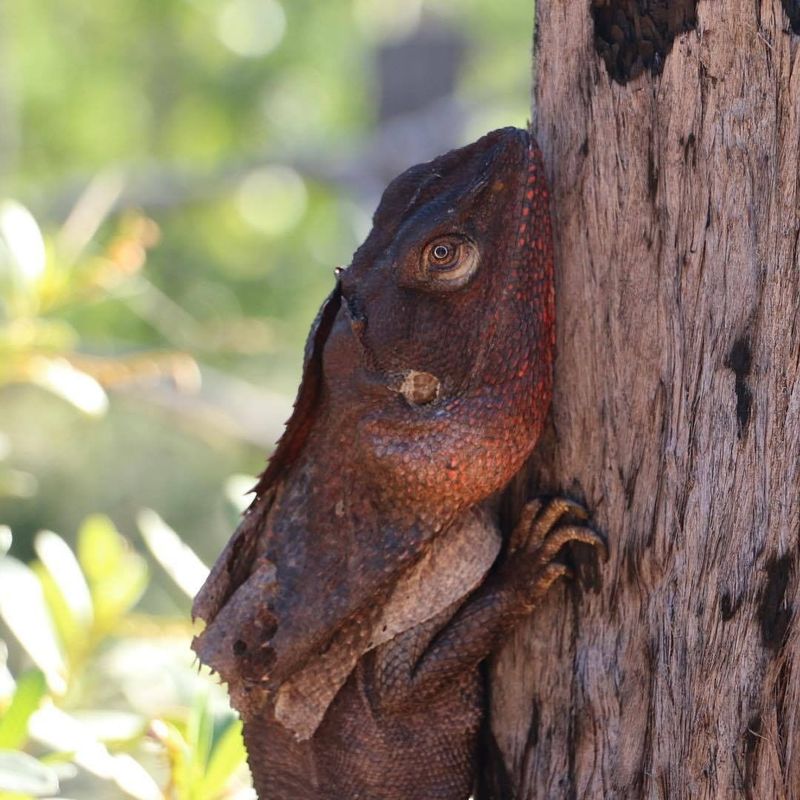
Blending into its environment is another of the Frilled Lizard’s survival strategies. Its skin is a mix of earthy browns and greens, allowing it to become nearly invisible against tree bark and foliage.
This camouflage helps shield it from both predators and prey. The lizard’s ability to remain motionless for extended periods enhances its camouflage effectiveness.
Observing this creature in the wild can be challenging, as it can disappear into its surroundings with ease. This trait is a testament to its evolutionary adaptation.
Breeding and Reproduction
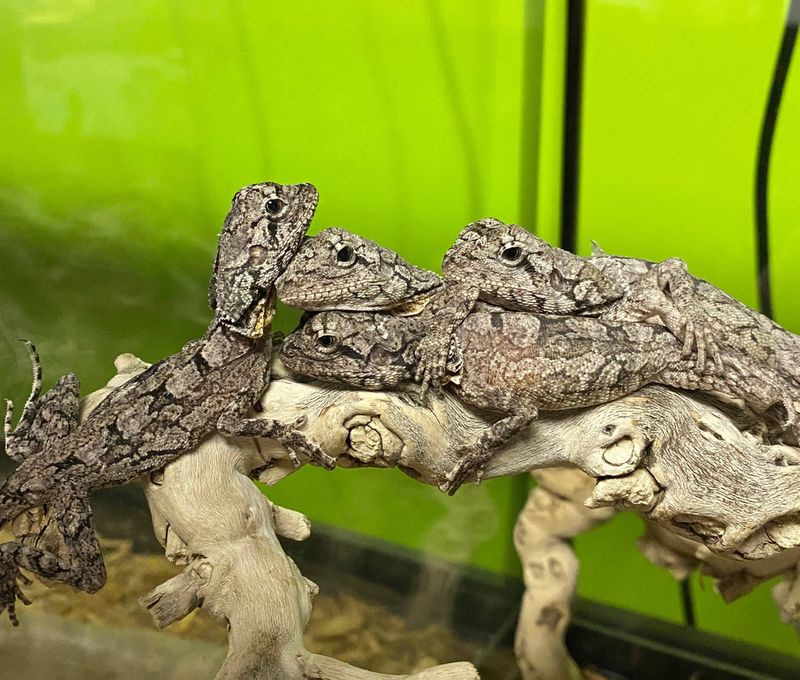
Reproduction in Frilled Lizards is a seasonal affair, coinciding with the rainy season when food is abundant. Females lay clutches of up to 25 eggs in nests dug into the ground.
The mother doesn’t guard the eggs, leaving them to hatch independently. This strategy ensures the young are born into an environment with ample food.
The hatchlings are self-sufficient from birth, displaying instinctual behaviors necessary for survival. This independence is crucial, as the young lizards must fend for themselves in a world full of predators.
Communication and Social Behavior
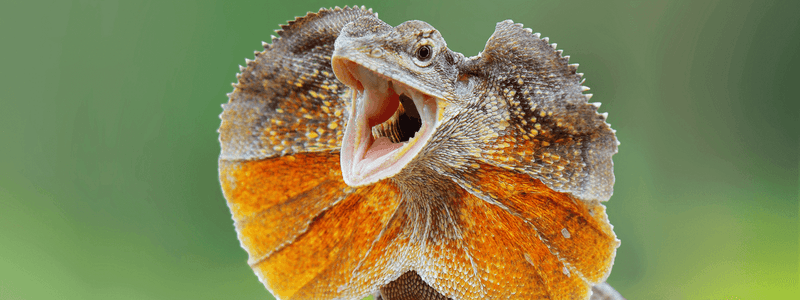
Frilled Lizards are not solitary creatures; they engage in complex social interactions. Communication is achieved through body language, such as frill displays and tail flicks.
These signals convey information about territory, mating readiness, and threats. Males are particularly territorial during the breeding season, using their frills to assert dominance. Observing these interactions provides insight into their complex social structures.
While they may seem reclusive, these lizards maintain a dynamic presence within their communities, often engaging in rituals that impact social hierarchies.
Habitat and Distribution
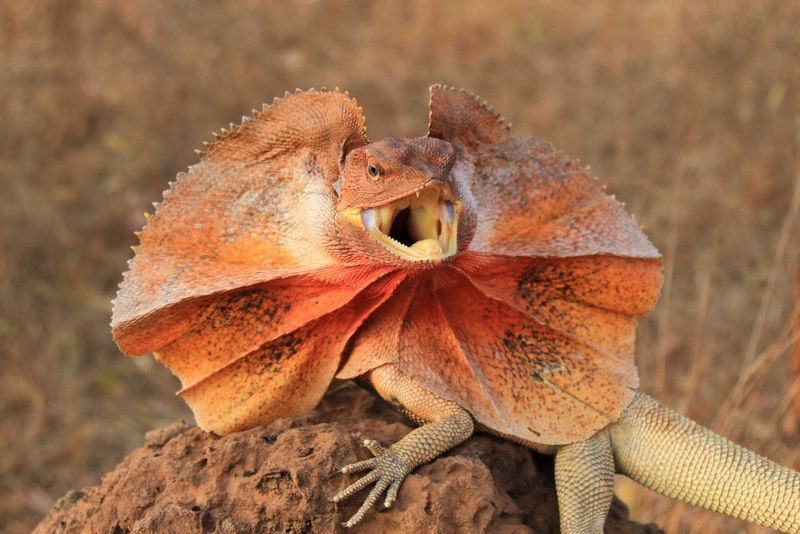
Native to northern Australia and parts of southern New Guinea, Frilled Lizards thrive in a variety of habitats. They are commonly found in savannas, woodlands, and tropical forests.
These environments provide ample food and shelter, crucial for their survival. The lizards are well-adapted to the hot, dry climate, with behaviors and physiology that help conserve water.
Their presence in these regions plays a role in the local ecosystem, as they help control insect populations. Their adaptability to different conditions is a testament to their resilience.
Dietary Habits
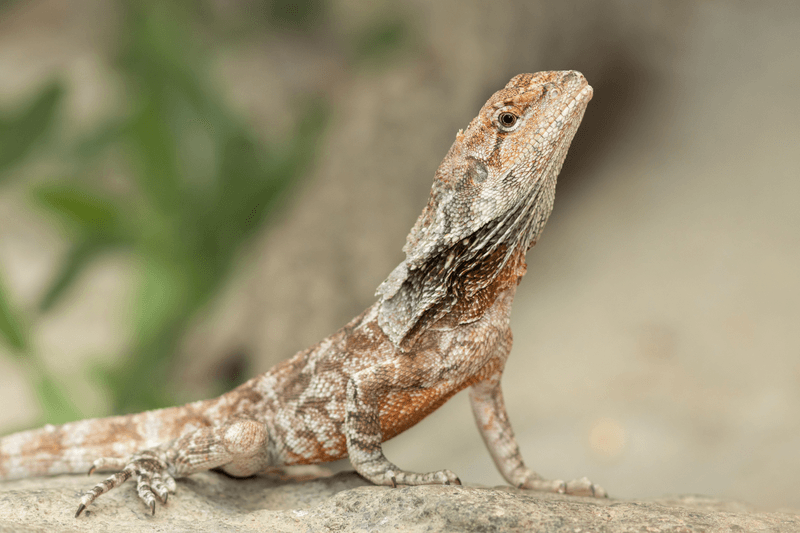
The Frilled Lizard’s diet is primarily insectivorous, focusing on ants, termites, and smaller arthropods. This dietary preference plays a vital role in maintaining ecological balance by controlling insect populations.
Their hunting technique involves quick bursts of movement to catch unsuspecting prey. The lizard’s long, sticky tongue aids in capturing insects efficiently.
Observing a Frilled Lizard during mealtime offers a glimpse into its natural behavior and the intricacies of its feeding habits. Their role as insect predators helps sustain the ecosystem’s health and diversity.
Thermoregulation Abilities
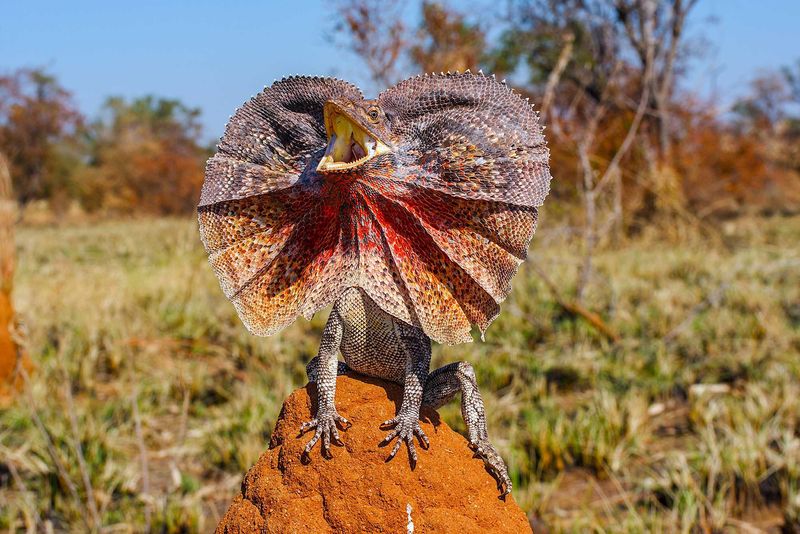
Regulating body temperature is essential for the Frilled Lizard’s survival. Being cold-blooded, it relies on external heat sources to function optimally.
Basking in the sun or seeking shade when necessary helps maintain its body temperature. This thermoregulation is crucial for digestion, movement, and overall health.
The lizard’s behavior changes with the temperature, often seen sunning itself on rocks during cooler mornings. Understanding these behaviors highlights the adaptability and survival strategies of the Frilled Lizard in its natural habitat.
Conservation Status
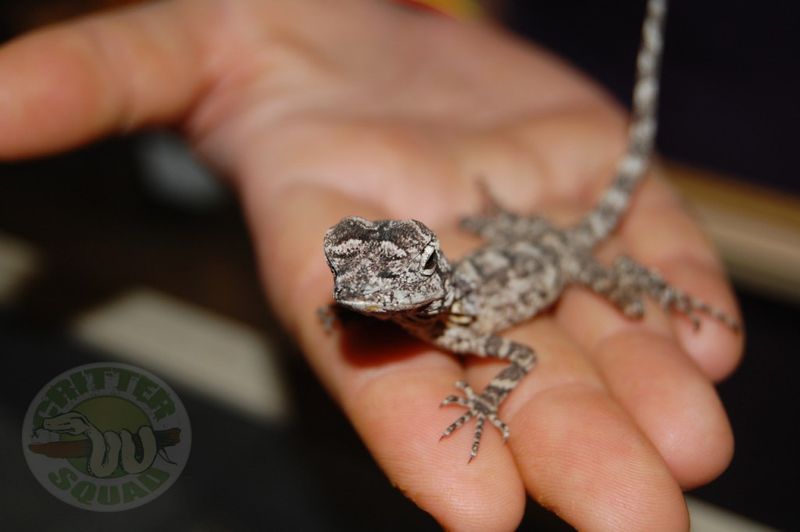
The Frilled Lizard is not currently considered endangered, although habitat destruction poses a potential threat. Conservation efforts focus on preserving natural habitats and understanding their ecological role.
Research plays a key role in ensuring these lizards continue to thrive across their native regions. Being aware of their conservation status helps highlight the importance of protecting biodiversity.
By maintaining their habitat, we ensure the continued presence of these unique reptiles. Efforts to monitor and document their populations are ongoing, contributing to their long-term survival.
Cultural Impact
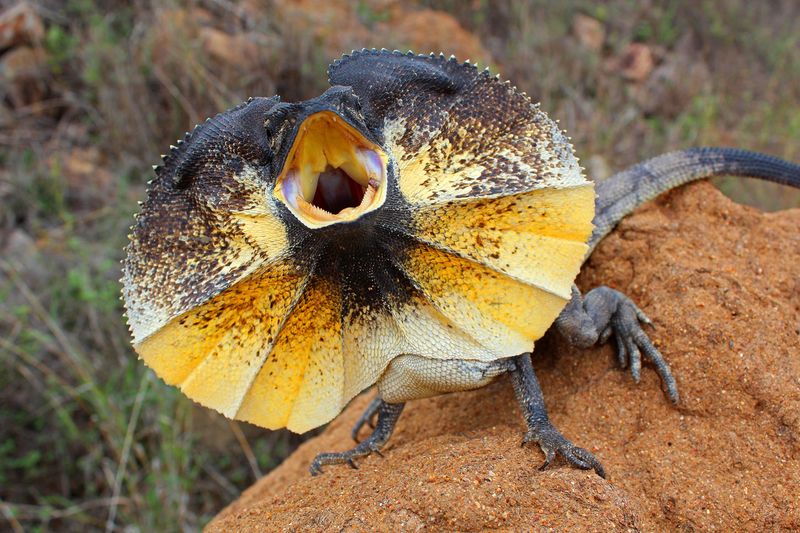
Frilled Lizards hold cultural significance, especially among Indigenous Australian communities. They often appear in art and folklore, symbolizing adaptability and resilience.
Stories and depictions of these lizards can be found across various indigenous groups, highlighting their place in cultural heritage. This lizard’s distinctive features make it a popular subject in traditional artworks.
The cultural resonance of the Frilled Lizard underscores the deep connection between people and wildlife, reflecting themes of survival and cleverness. It’s a reminder of the rich biodiversity that is integral to cultural identity.
Scientific Research and Interest
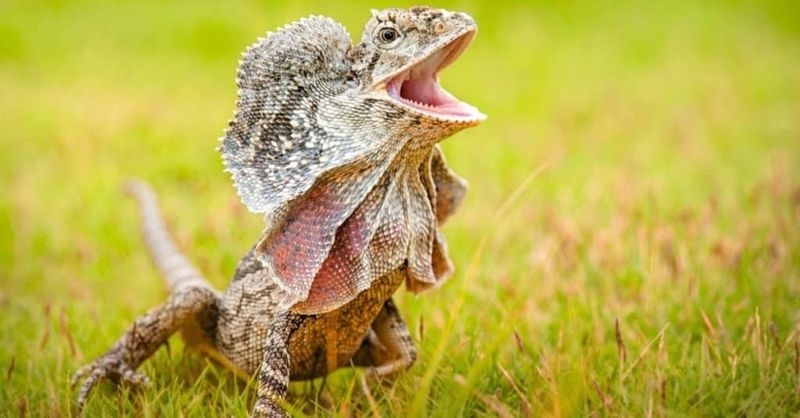
Scientifically, the Frilled Lizard has garnered interest for its unique features and behaviors. Research has delved into understanding its frill mechanism, social behavior, and ecological impact.
These studies contribute to broader knowledge about reptilian adaptations and evolutionary biology. The lizard’s ability to thrive in challenging environments provides insights into resilience and adaptability.
Ongoing studies aim to uncover more about their unique physiology and survival strategies. Such research not only enhances our understanding but also aids in conservation efforts, ensuring these fascinating creatures remain a vital part of our ecosystem.

